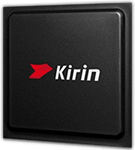
Intel Celeron G3900T Benchmark, Test and specs
Last updated:
The Intel Celeron G3900T is a 2 core processor. It can handle 2 threads simultaneously and was introduced in Q1/2016. The Intel Celeron G3900T is based on the 6. generation of the Intel Celeron series and requires a mainboard with the socket LGA 1151. The Intel Celeron G3900T scores 682 points with one CPU core in the Geekbench 5 benchmark. When using all CPU cores, the result is 1,330 points.
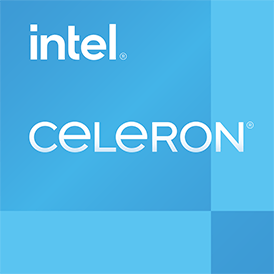
| Name: | Intel Celeron G3900T |
|---|---|
| Family: | Intel Celeron (165) |
| CPU group: | Intel Celeron G3000 6. Gen. (6) |
| Architecture: | Skylake S |
| Segment: | Desktop / Server |
| Generation: | 6 |
| Predecessor: | -- |
| Successor: | Intel Celeron G4900T |
CPU Cores and Base Frequency
The 2 CPU cores of the Intel Celeron G3900T clock with 2.60 GHz. The number of CPU cores and the clock frequency of the processor are largely responsible for the overall performance.
| CPU Cores / Threads: | 2 / 2 |
|---|---|
| Core architecture: | normal |
| Cores: | 2x |
| Hyperthreading / SMT: | No |
|---|---|
| Overclocking: | No |
| Frequency: | 2.60 GHz |
| Turbo Frequency (1 Core): | -- |
| Turbo Frequency (2 Cores): | -- |
Internal Graphics
With the Intel HD Graphics 510, the Intel Celeron G3900T has an build in graphic solution. It has 12 SM processors, which have a total of 96 texture shaders. The iGPU not only enables games, but also significantly accelerates video playback.
| GPU name: | Intel HD Graphics 510 |
|---|---|
| GPU frequency: | 0.35 GHz |
| GPU (Turbo): | 0.95 GHz |
| Compute units: | 12 |
| Shader: | 96 |
| Hardware Raytracing: | No |
| Release date: | Q1/2015 |
| Max. displays: | 3 |
|---|---|
| Generation: | 9 |
| Direct X: | 12.0 |
| Technology: | 14 nm |
| Max. GPU Memory: | 32 GB |
| Frame Generation: | No |
Hardware codec support
Processors that have an integrated graphics can play videos faster and more efficiently. This can have a positive effect on the battery life of notebooks, for example.
| h265 / HEVC (8 bit): | Decode / Encode |
|---|---|
| h265 / HEVC (10 bit): | Decode |
| h264: | Decode / Encode |
| VP8: | Decode / Encode |
| VP9: | Decode |
| AV1: | No |
|---|---|
| AVC: | Decode / Encode |
| VC-1: | Decode |
| JPEG: | Decode |
Memory & PCIeThe Intel Celeron G3900T supports up to 64 GB memory in up to 2 (Dual Channel) memory channels. This results in a maximum memory bandwidth of 34.1 GB/s. |
|
| Memory type: | Memory bandwidth: |
|---|---|
| DDR4-2133 DDR3L-1600 | 34.1 GB/s 25.6 GB/s |
| Max. Memory: | 64 GB |
| Memory channels: | 2 (Dual Channel) |
| ECC: | Yes |
| PCIe: | 3.0 x 16 |
| PCIe Bandwidth: | 15.8 GB/s |
Thermal ManagementWith the TDP, the processor manufacturer specifies the cooling solution required for the processor. The Intel Celeron G3900T has a TDP of 35 W. |
|
|---|---|
| TDP (PL1 / PBP): | 35 W |
| TDP (PL2): | -- |
| TDP up: | -- |
| TDP down: | -- |
| Tjunction max.: | 100 °C |
Technical details
The Intel Celeron G3900T has a 2.00 MB large cache. The processor is manufactured in 14 nm. Modern production increases the efficiency of the processor.
| Technology: | 14 nm |
|---|---|
| Chip design: | Monolithic |
| Socket: | LGA 1151 |
| L2-Cache: | -- |
| L3-Cache: | 2.00 MB |
| AES-NI: | Yes |
| Operating systems: | Windows 10, Linux |
| Virtualization: | VT-x, VT-x EPT, VT-d |
|---|---|
| Instruction set (ISA): | x86-64 (64 bit) |
| ISA extensions: | SSE4.1, SSE4.2 |
| Release date: | Q1/2016 |
| Release price: | -- |
| Part Number: | -- |
| Documents: | Technical data sheet |
Rate this processor
Benchmark results

The benchmark results for the Intel Celeron G3900T have been carefully checked by us. We only publish benchmark results that have been created by us or that have been submitted by a visitor and then checked by a team member. All results are based on and fullfill our benchmark guidelines.
Geekbench 5, 64bit (Single-Core)
Geekbench 5 is a cross plattform benchmark that heavily uses the systems memory. A fast memory will push the result a lot. The single-core test only uses one CPU core, the amount of cores or hyperthreading ability doesn't count.
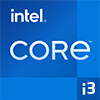
|
Intel Core i3-7130U
2C 4T @ 2.70 GHz |
||
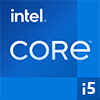
|
Intel Core i5-4278U
2C 4T @ 3.10 GHz |
||

|
Intel Core i5-4288U
2C 4T @ 3.10 GHz |
||
|
|
Intel Celeron G3900T
2C 2T @ 2.60 GHz |
||
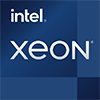
|
Intel Xeon E5-2630 v2
6C 12T @ 3.10 GHz |
||

|
Intel Pentium G3220
2C 2T @ 3.00 GHz |
||
|
|
HiSilicon Kirin 980
8C 8T @ 2.60 GHz |
||
Geekbench 5, 64bit (Multi-Core)
Geekbench 5 is a cross plattform benchmark that heavily uses the systems memory. A fast memory will push the result a lot. The multi-core test involves all CPU cores and taks a big advantage of hyperthreading.
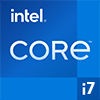
|
Intel Core i7-4510U
2C 4T @ 2.70 GHz |
||

|
Intel Pentium Silver N5030
4C 4T @ 2.40 GHz |
||

|
AMD Athlon II X4 640
4C 4T @ 3.00 GHz |
||
|
|
Intel Celeron G3900T
2C 2T @ 2.60 GHz |
||

|
Intel Core i7-2620M
2C 4T @ 2.70 GHz |
||

|
Intel Core i7-3667U
2C 4T @ 3.00 GHz |
||

|
Intel Core i3-3210
2C 4T @ 3.20 GHz |
||
Geekbench 6 (Single-Core)
Geekbench 6 is a benchmark for modern computers, notebooks and smartphones. What is new is an optimized utilization of newer CPU architectures, e.g. based on the big.LITTLE concept and combining CPU cores of different sizes. The single-core benchmark only evaluates the performance of the fastest CPU core, the number of CPU cores in a processor is irrelevant here.

|
Intel Core i3-2130
2C 4T @ 3.40 GHz |
||
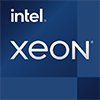
|
Intel Xeon X3440
4C 8T @ 2.93 GHz |
||

|
Intel Core i7-940
4C 8T @ 3.20 GHz |
||
|
|
Intel Celeron G3900T
2C 2T @ 2.60 GHz |
||

|
Intel Core i7-3612QE
4C 8T @ 3.10 GHz |
||

|
Intel Core i5-3230M
2C 4T @ 3.20 GHz |
||

|
Intel Core i5-2310
4C 4T @ 3.20 GHz |
||
Geekbench 6 (Multi-Core)
Geekbench 6 is a benchmark for modern computers, notebooks and smartphones. What is new is an optimized utilization of newer CPU architectures, e.g. based on the big.LITTLE concept and combining CPU cores of different sizes. The multi-core benchmark evaluates the performance of all of the processor's CPU cores. Virtual thread improvements such as AMD SMT or Intel's Hyper-Threading have a positive impact on the benchmark result.
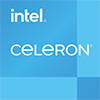
|
Intel Celeron N4100
4C 4T @ 2.40 GHz |
||

|
Intel Core i7-3517U
2C 4T @ 2.50 GHz |
||

|
Intel Core i5-4202Y
2C 4T @ 1.60 GHz |
||
|
|
Intel Celeron G3900T
2C 2T @ 2.60 GHz |
||

|
Intel Core i5-2435M
2C 4T @ 2.40 GHz |
||

|
Intel Core i5-2430M
2C 4T @ 2.40 GHz |
||

|
Intel Core i3-3220T
2C 4T @ 2.80 GHz |
||
iGPU - FP32 Performance (Single-precision GFLOPS)
The theoretical computing performance of the internal graphics unit of the processor with simple accuracy (32 bit) in GFLOPS. GFLOPS indicates how many billion floating point operations the iGPU can perform per second.

|
AMD A4-4000
AMD Radeon HD 7480D @ 0.72 GHz |
||

|
AMD A4-5150M
AMD Radeon HD 8350G @ 0.72 GHz |
||

|
Intel Pentium G3420
Intel HD Graphics (Haswell GT1) @ 1.15 GHz |
||
|
|
Intel Celeron G3900T
Intel HD Graphics 510 @ 0.95 GHz |
||

|
Intel Celeron G3930TE
Intel HD Graphics 610 @ 0.95 GHz |
||

|
Intel Core i7-2617M
Intel HD Graphics 3000 @ 0.95 GHz |
||

|
Intel Core i3-2357M
Intel HD Graphics 3000 @ 0.95 GHz |
||
Estimated results for PassMark CPU Mark
Some of the CPUs listed below have been benchmarked by CPU-monkey. However the majority of CPUs have not been tested and the results have been estimated by a CPU-monkey’s secret proprietary formula. As such they do not accurately reflect the actual Passmark CPU mark values and are not endorsed by PassMark Software Pty Ltd.

|
AMD A6-3420M
4C 4T @ 2.40 GHz |
||

|
Intel Celeron G3930T
2C 2T @ 2.70 GHz |
||

|
Intel Core i5-2415M
2C 4T @ 2.30 GHz |
||
|
|
Intel Celeron G3900T
2C 2T @ 2.60 GHz |
||

|
Intel Celeron G3930TE
2C 2T @ 2.70 GHz |
||
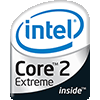
|
Intel Core 2 Extreme QX6700
4C 4T @ 2.66 GHz |
||
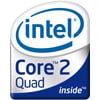
|
Intel Core 2 Quad Q6700
4C 4T @ 2.66 GHz |
||
Cinebench R15 (Single-Core)
Cinebench R15 is the successor of Cinebench 11.5 and is also based on the Cinema 4 Suite. Cinema 4 is a worldwide used software to create 3D forms. The single-core test only uses one CPU core, the amount of cores or hyperthreading ability doesn't count.

|
Intel Xeon E5-2658 v3
12C 24T @ 2.90 GHz |
||

|
Intel Core i5-4310U
2C 4T @ 3.00 GHz |
||

|
Intel Core i5-6442EQ
4C 4T @ 2.70 GHz |
||
|
|
Intel Celeron G3900T
2C 2T @ 2.60 GHz |
||

|
Intel Core i5-5200U
2C 4T @ 2.70 GHz |
||

|
Intel Core i5-5250U
2C 4T @ 2.70 GHz |
||

|
Intel Core i3-3210
2C 4T @ 3.20 GHz |
||
Cinebench R15 (Multi-Core)
Cinebench R15 is the successor of Cinebench 11.5 and is also based on the Cinema 4 Suite. Cinema 4 is a worldwide used software to create 3D forms. The multi-core test involves all CPU cores and taks a big advantage of hyperthreading.

|
AMD Athlon II X4 600e
4C 4T @ 2.20 GHz |
||
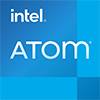
|
Intel Atom x6211E
2C 2T @ 2.20 GHz |
||

|
AMD A10-6700T
4C 4T @ 3.50 GHz |
||
|
|
Intel Celeron G3900T
2C 2T @ 2.60 GHz |
||

|
Intel Celeron G1840
2C 2T @ 2.80 GHz |
||

|
Intel Celeron G1830
2C 2T @ 2.80 GHz |
||

|
AMD Phenom II X3 710
3C 3T @ 2.60 GHz |
||
Benchmarks

Geekbench 5 (SC)
2,488 entries
2,488 entries

Geekbench 5 (MC)
2,461 entries
2,461 entries

Geekbench 6 (SC)
1,755 entries
1,755 entries

Geekbench 6 (MC)
1,703 entries
1,703 entries

FP32 SP (iGPU)
2,026 entries
2,026 entries

PassMark CPU-Mark
2,392 entries
2,392 entries

Cinebench R15 (SC)
1,106 entries
1,106 entries

Cinebench R15 (MC)
1,101 entries
1,101 entries

Geekbench 3 (SC)
942 entries
942 entries

Geekbench 3 (MC)
938 entries
938 entries

Cinebench R11.5 (SC)
825 entries
825 entries

Cinebench R11.5 (MC)
836 entries
836 entries

Cinebench R11.5 iGPU
383 entries
383 entries
Description of the processor
The Intel Celeron G3900T is a processor from Intels Celeron series. It was released in the first quarter of 2016 and is based on the Intel LGA 1151 socket. This means that the processor can be operated on any mainboard with this socket, which also makes it clear that the Intel Celeron G3900T is a desktop processor .The Intel Celeron G3900T is manufactured using the 14-nanometer process, relies on a monolithic chip design and is based on Intels Skylake-S architecture.
The processor is equipped with 2 cores that clock at 2.60 gigahertz. The Intel Celeron G3900T does not have a turbo mode, which makes it clear that it cannot be overclocked manually either. Hyperthreading technology is also not supported, so you have to make do with the 2 threads of the physical cores.
The Intel HD Graphics 510 is used as the internal graphics unit in the Intel Celeron G3900T. This graphics unit has 12 execution units and 96 shader units and is also produced using the 14-nanometer process. It was integrated into a processor for the first time in the first quarter of 2015 and is therefore a year older than the processor. The iGPU clocks at 0.35 gigahertz and can increase its clock rate to up to 0.95 gigahertz if necessary. With this, it achieves an FP32 computing power (single precision) of 182 GigaFLOPS, which is not enough for much more than simple office applications.
The processor has 2 memory channels and can be operated with up to 64 gigabytes of RAM. Both DDR3L-1600 (SO-DIMM) and DDR4-2133 RAM are supported. In addition, it also supports the operation of main memory with automatic error correction, so-called ECC main memory.
The Intel Celeron G3900T has 16 type 3.0 PCIe lanes for connecting fast data carriers or various expansion cards.
Popular comparisons
back to index



